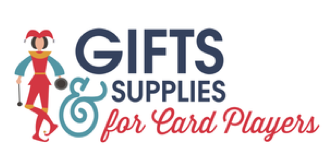Unleash Your Inner Gambit: The Art and Science of Card-Throwing
by Michael Thomas Kincella
Did you find poker too pedestrian? Were you left bemused at Bridge? If you’ve just about given up hope of finding a use for playing cards, you might consider throwing them away. Literally.
You see, there’s a whole community of people who love cards but couldn’t care less about straights and flushes and contracts.
For this community, throwing cards–for distance, for accuracy, for fun–is a much better use of the little rectangles.
In this article, we’ll look at when people started throwing playing cards. We’ll look at what sort of cards you should throw. And we’ll examine the different techniques card-throwing enthusiasts use depending on what they’re trying to accomplish. Ready? Let’s begin.
When did people start throwing cards?
At some point in the middle of the 19th Century, French magician Alexander Herrmann started throwing signed, custom-made playing cards into the audience as part of his stage act. As such, he is generally considered to be the first person to use playing cards in this manner.
Today, his name lives on in The Hermann Grip, the method he popularized for throwing cards.
What cards can you use for throwing?
Paper cards
I don’t have the exact figures, but I bet most households worldwide have a pack of paper playing cards lurking in a forgotten drawer. If the idea of throwing cards tickles you, fish the paper cards out and give it a try.
However, while ubiquitous, paper cards have a few drawbacks when they’re used primarily as throwing objects. For a start, the material isn’t durable; a couple of wayward flicks from a novice hand might cause irreparable damage to your cards. Second, you won’t be able to throw them as far as, say, a plastic card.
Plastic cards
When it comes to card throwing, plastic cards are an upgrade on paper. While they’re less ubiquitous than the paper version, plastic cards aren’t that much more expensive, and have certain properties that make them a much better choice for throwing.
For instance, plastic cards are more durable than their paper counterparts. That means they might be more forgiving when you’re just starting out. In addition, plastic cards carry more heft. That means you are much more likely to throw a plastic card farther (once you’ve familiarized yourself with the proper technique).
Specialist cards
In theory, specialist cards trump paper and plastic when it comes to throwing. Certain brands of card makers promise up to five times more durability than regular plastic cards, thanks to reinforced coating.
In addition, certain specialist cards feature modifications that aid in the throwing spectacle: bevel cut edges for extra aerodynamic abilities, or cuts to the inner card that create whizzing noises as they fly through the air.
What can you aim cards at?
If you’ve ever watched Groundhog day, you’ll recall the scene where Bill Murray’s character teaches Andy McDowell’s character to throw cards into an upturned bowler hat.
On the off chance you don’t have a bowler hat lying around, you can improvise: use a baseball cap, a basin, a bucket – anything that’s big enough to accept a thrown card, but small enough to make it challenging.
After a quick look online, I found pieces of foam–with bullseyes and scoring systems– specifically designed as targets for the budding card thrower.
Certain fruit and vegetables can also act as targets. Plus, scything a celery stick with a card from a well-placed flick of the wrist is quite the party trick. Still, it might be sensible (and cheaper) to start on the hat and the foam before moving on to organic objects.
How do you throw cards?
You now know when people started throwing cards. You know what cards people throw. And you know what to aim at when you’re throwing. So, how do you actually go about throwing the cards?
Well, that depends on who you talk to. For some throwers, it’s all about The Hermann Grip. That’s where you pinch the card between middle finger and thumb, resting the index finger across the top of the card so it reaches the far corner.
Ricky Jay–magician and author of ‘Cards as Weapons’–uses a similar grip to Hermann. However, instead of resting the index finger along the top of the card, Jay’s Grip has you place your index finger on the inside corner so it creates a hook.
The Thurston Grip–named after master magician Howard Thurston–keeps the thumb out of proceedings altogether. In this grip, the top of the card is clasped between index finger and middle finger, which is then curled back towards the palm and flicked forward on release.
What grip does a world champion use? Rick Smith Jr. is an illusionist, a magician, and the world record holder for throwing a standard playing card the longest distance – an impressive 216 feet, 4 inches.
According to the man himself, Rick reached expert card-throwing status with The Thurston Grip, along with a little help from his days spent as a baseball pitcher.
Ultimately, the best grip is the one you feel most comfortable using. So, fish out those cards, practise flicking, and Rick’s world record could be in jeopardy before long.
Watch Rick’s video below for all sorts of tips including how to make your cards whistle!
Michael Thomas Kincella is a freelance writer, living and working in Glasgow, Scotland. When he’s not writing, he can normally be found playing (or learning how to get better at) poker. Find him on LinkedIn.





